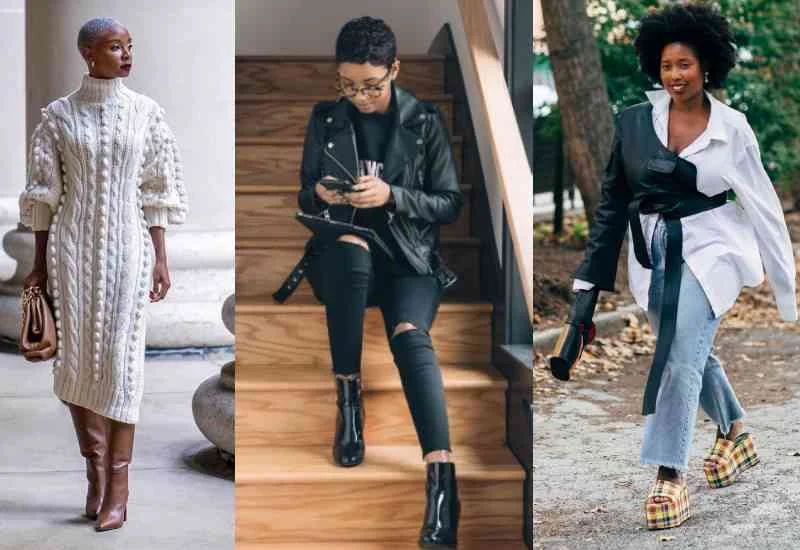Sustainable fashion is a growing trend that focuses on creating clothing in an environmentally and socially responsible manner. With the increasing awareness of the impact of fast fashion on the planet, many people are seeking ways to build an eco-friendly wardrobe. Sustainable Fashion: How to Build an Eco-Friendly Wardrobe involves making conscious choices about the materials, production processes, and longevity of the clothing items.
When it comes to creating an eco-friendly wardrobe, there are several alternatives to traditional fashion choices. For example, one can opt for clothing made from organic cotton, hemp, or bamboo, which are sustainable and renewable materials. Another option is to choose clothing from ethical and fair trade brands that prioritize the well-being of workers and the environment. Additionally, investing in timeless and versatile pieces that can be worn for many years can reduce the need for constant new purchases and contribute to a more sustainable wardrobe.
Sustainable Fashion: How to Build an Eco-Friendly Wardrobe
Building an eco-friendly wardrobe is an important step towards sustainable fashion. This involves making ethical and environmentally conscious choices when it comes to clothing, from the materials used to the manufacturing processes. By building an eco-friendly wardrobe, you can reduce your carbon footprint and support brands that prioritize sustainability.
There are several ways to build an eco-friendly wardrobe, including choosing clothing made from sustainable materials such as organic cotton, hemp, or bamboo. You can also support ethical and fair trade fashion brands that prioritize fair wages and safe working conditions for their workers. Additionally, you can minimize waste by investing in high-quality, timeless pieces that are designed to last for years, rather than following fast fashion trends.
Choosing Sustainable Materials
Choosing sustainable materials is a key aspect of building an eco-friendly wardrobe. Organic cotton, for example, is grown without the use of harmful pesticides and chemical fertilizers, making it better for the environment and the workers involved in its production. Hemp is another sustainable material, as it requires minimal water and no pesticides to grow. Bamboo is also a popular choice for sustainable fashion, as it is a fast-growing and renewable resource. By opting for clothing made from these materials, you can reduce the environmental impact of your wardrobe.
Another sustainable material to consider is Tencel, which is made from the wood pulp of sustainably sourced eucalyptus trees. Tencel production is known for its closed-loop process, where the solvents and water used are recycled and reused, making it a more eco-friendly alternative to traditional synthetic fabrics. By choosing clothing made from these sustainable materials, you can support environmentally friendly practices in the fashion industry.
Supporting Ethical and Fair Trade Brands
Supporting ethical and fair trade brands is another important aspect of building an eco-friendly wardrobe. These brands prioritize fair wages, safe working conditions, and sustainable production processes. By choosing to support these brands, you can ensure that your clothing purchases are not contributing to exploitative labor practices and unsafe working conditions in the fashion industry. Look for certifications such as Fair Trade or Global Organic Textile Standard (GOTS) when shopping for ethical and fair trade clothing.
Additionally, supporting local and independent designers can also contribute to a more sustainable fashion industry. By purchasing clothing from local artisans and independent designers, you can reduce the carbon footprint associated with shipping and support small businesses that prioritize sustainability and ethical production practices.
Minimizing Waste with Timeless Pieces
Minimizing waste is a key principle of sustainable fashion, and one way to do this is by investing in timeless pieces that are designed to last for years. Instead of following fast fashion trends that come and go, opt for classic styles and high-quality garments that can withstand the test of time. By choosing versatile pieces that can be mixed and matched in various ways, you can build a more sustainable wardrobe that reduces the need for constant consumption and disposal of clothing.
Another way to minimize waste is by embracing the concept of capsule wardrobes, where you curate a small collection of essential, versatile clothing items that can be worn in multiple combinations. This approach encourages mindful consumption and helps to reduce the overall environmental impact of your wardrobe. By prioritizing quality over quantity and embracing a minimalist approach to fashion, you can build a more eco-friendly wardrobe that supports sustainable practices.
| Step | Description |
|---|---|
| 1 | Audit your current wardrobe to assess what you already have. |
| 2 | Shop for timeless, high-quality pieces that will last for years. |
| 3 | Choose natural and sustainable fabrics like organic cotton, linen, or hemp. |
| 4 | Support ethical and fair trade fashion brands. |
| 5 | Upcycle or repurpose old clothing to give them a new life. |
| 6 | Consider renting or swapping clothes for special occasions. |
| 7 | Maintain and repair your clothes to extend their lifespan. |
conclusıon
Sustainable fashion is about making conscious choices to build a wardrobe that is environmentally friendly and socially responsible. By auditing your current wardrobe, choosing timeless and high-quality pieces, opting for sustainable fabrics, supporting ethical brands, and practicing mindful consumption, you can create an eco-friendly wardrobe that reduces the negative impact on the planet and its inhabitants.




